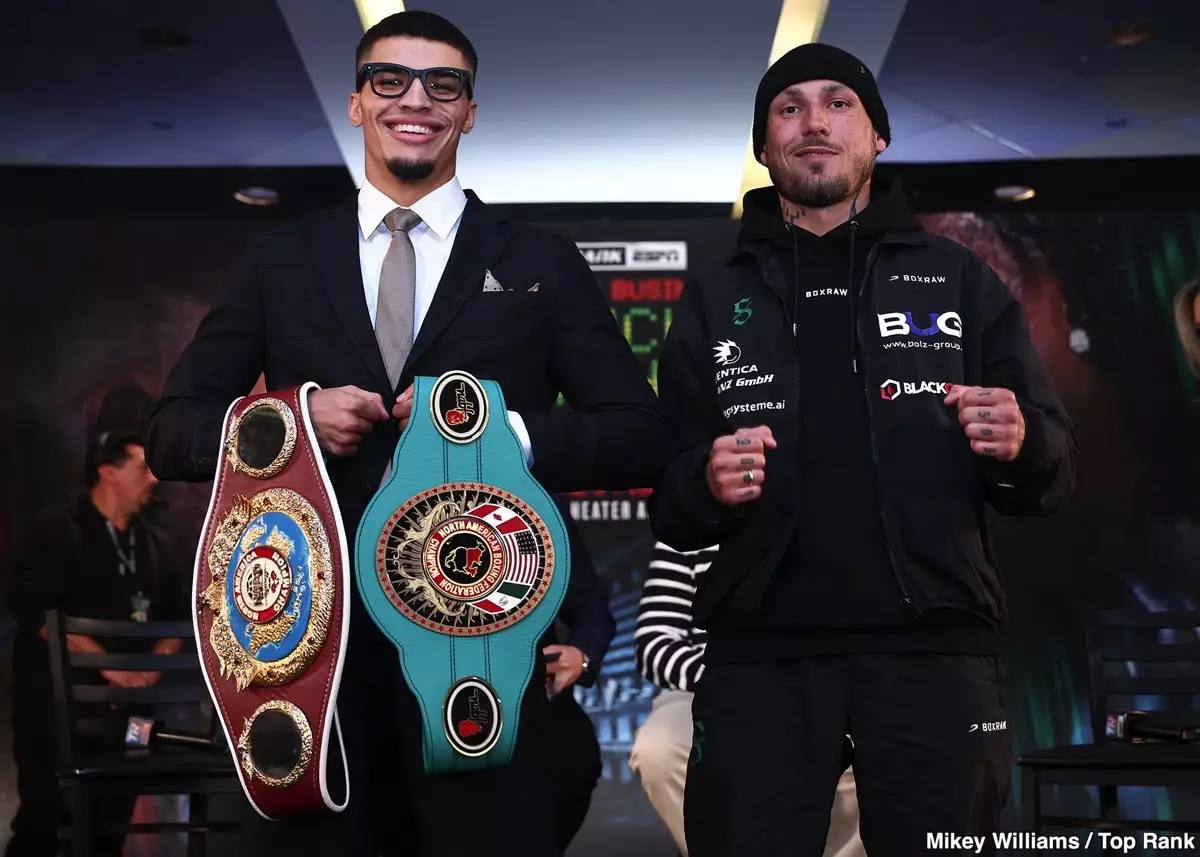In the high-stakes world of boxing, decisions often revolve around the intricate balance between risk and reward. Recently, rising star Xander Zayas made headlines by claiming he was offered a fight against the formidable WBC interim junior middleweight champion, Vergil Ortiz Jr., slated for February 22nd in Riyadh. However, Ortiz’s team opted for Israil Madrimov, a former WBA champion. This decision sparked Zayas’s ire, as he suggested that Ortiz chose the “safer route” by facing Madrimov instead of him. Such statements demand a closer examination of the nuances inherent in boxing matchups and the implications for fighters’ careers.
At just 22 years old, Zayas boasts an undefeated record of 20 wins, complemented by 12 knockouts. While his youth and record are commendable, the underlying potential for stardom carries with it scrutiny of his aptitude within the ring. Zayas argues that Ortiz’s choice reflects a reluctance to engage with a rising talent, framing it as a strategic business decision. However, this assertion may overlook the complexities of Ortiz’s situation, as facing a less seasoned opponent like Zayas might possess inherent risk—particularly considering Zayas’s emerging notoriety in the lightweight division.
Zayas’s perspective highlights his desire to push boundaries and elevate his profile; he expressed urgency in accepting the fight, detailing how he promptly responded to initial offers. This proactive stance is commendable and underscores his ambition to capitalize on opportunities that could further his career. Still, there’s a not-so-subtle undertone of self-promotion in his comments, which might not resonate well with boxing purists who prioritize skill and experience over hype.
While Zayas may project confidence, an objective evaluation of his abilities suggests that he may not be entirely prepared for the rigors of facing Ortiz. Critics argue that Zayas’s lack of knockout power, combined with apparent vulnerabilities such as a questionable chin, poses significant questions regarding his readiness to compete at this level. His recent performances against lesser opposition have raised eyebrows, leading many to believe that he is being carefully groomed by Top Rank in a fashion reminiscent of Edgar Berlanga’s rise. This cautious approach may serve as both a blessing and a curse; while it protects him from potential losses, it can equally stymie his growth and competitive exposure.
Looking ahead, Zayas’s upcoming fight against Slawa Spomer is a crucial juncture in his career. With Spomer holding an impressive record of 20-0, this match could serve as either a stepping stone or a stumbling block. Given the depth of talent in the junior middleweight division, where fighters like Bakhram Murtazaliev and Sebastian Fundora thrive, Zayas needs to continually impress to solidify his place in a highly competitive environment.
While Zayas’s aspirations to fight top opponents like Ortiz are admirable, realistic assessments of his readiness for such challenges must prevail. The delicate interplay of matchmaking, career progression, and individual fighter dynamics in boxing lends itself to complex discussions, and Zayas’s situation exemplifies the intricate layers that define professional boxing today. As he continues to carve his niche, understanding both the risks and rewards will be vital for his long-term success in this unforgiving sport.


Leave a Reply